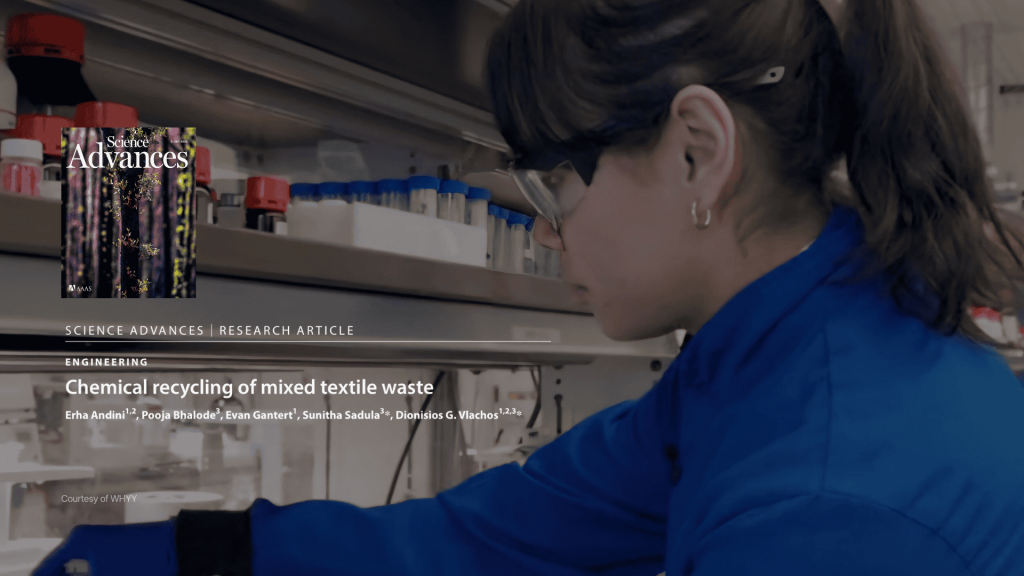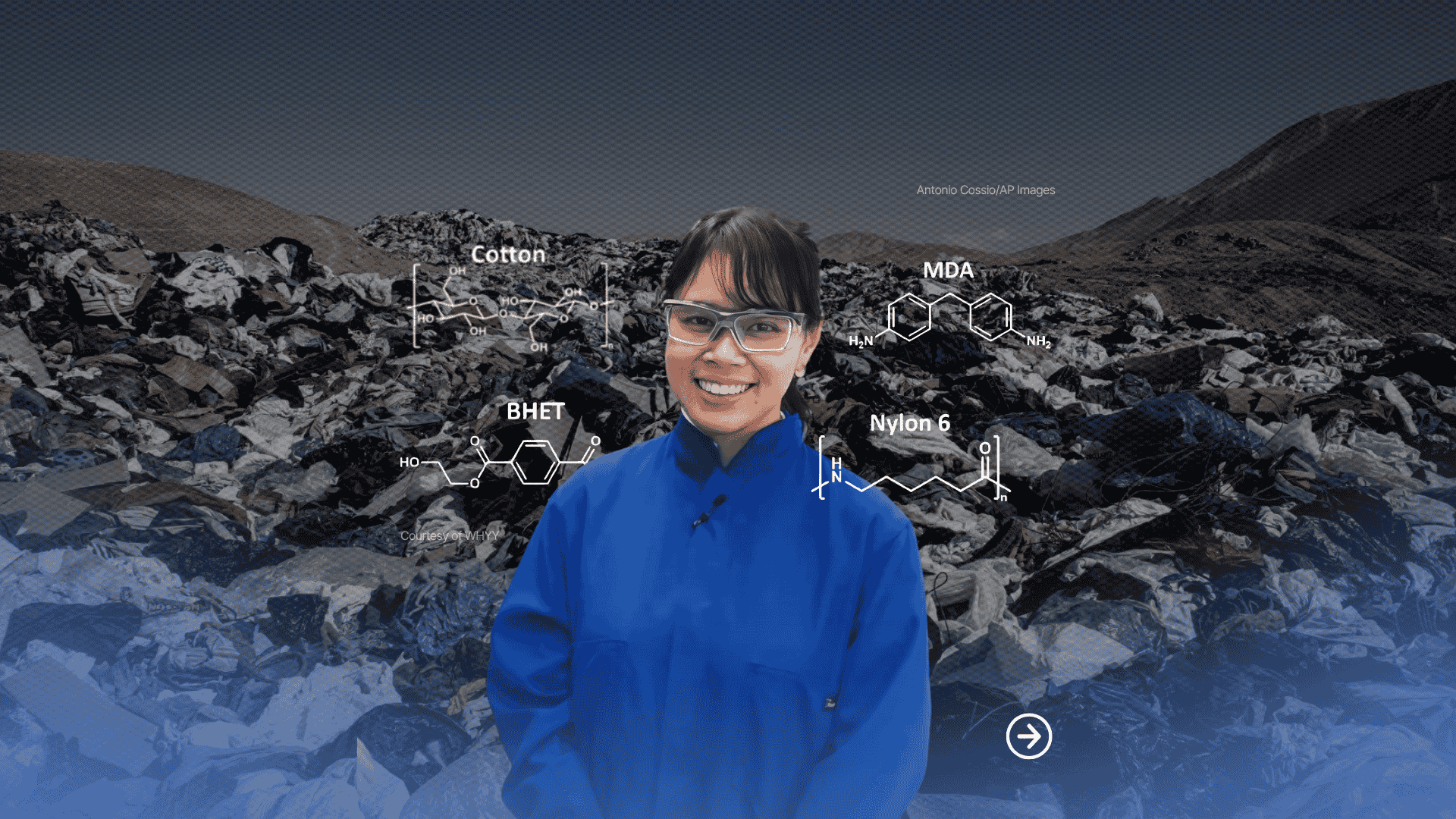In a world where less than 1% of discarded textiles are recycled back into new textiles, Indonesian researcher Erha Andini is breaking barriers with a promising innovation in chemical recycling.
With the global volume of clothing increasing each year, the waste generated has become a pressing environmental challenge. Most textile waste — especially mixed fibers like polyester-cotton or polyester-spandex — ends up in landfills, mixed with household waste, or incinerated. While mechanical recycling offers a low-cost option, it cannot process these blended materials effectively, and it often produces shorter fibers that are “downcycled” into non-textile products such as insulation, cleaning cloths, or mattress stuffing.
A Landmark Study in Textile Recycling
Erha Andini, a PhD candidate at the University of Delaware, published her study “Chemical Recycling of Mixed Textile Waste” in Science Advances (Vol 10 / Issue 27), an open-access multidisciplinary journal. The research quickly caught international attention, earning coverage in Nature, MIT Technology Review, and The Washington Post.
The excitement is well justified — her work introduces a faster and more efficient method to recycle mixed textile waste without the need for sorting.

What Makes Erha’s Method Different?
The study employs a special solvent capable of breaking down polyester while leaving cotton and nylon fibers intact. By using microwave energy and adding zinc oxide as a catalyst, her team reduced the decomposition process to just 15 minutes — compared to over an hour in conventional plastic recycling methods.
The broken-down polyester becomes BHET (bis(2-hydroxyethyl) terephthalate), an organic compound that can be re-polymerized into new polyester fibers. This means the method not only avoids quality loss but also enables true fiber-to-fiber recycling of blended textiles.
For the first time, textiles containing mixed fibers can be chemically recycled without pre-sorting — a game changer in textile waste management.
While promising, the current solvent used in Erha’s process remains expensive and challenging to recover for reuse, making large-scale industrial application difficult for now.
Undeterred, Erha — who recently earned a fellowship for entrepreneurs — is determined to take her findings beyond the lab. In the coming years, she plans to launch a start-up to commercialize her breakthrough, with the goal of making mixed textile recycling both economically viable and scalable.
Celebrating Local Talent on the Global Stage
As one of the world’s largest textile-producing nations, Indonesia stands to benefit greatly from innovations that close the loop on textile waste. A scalable chemical recycling solution for mixed fabrics could:
Reduce the volume of textile waste going to landfills or being burned.
Preserve material value for reuse in high-quality fabrics.
Strengthen Indonesia’s position as a leader in sustainable and circular textile manufacturing.
Erha’s achievement is more than a personal milestone — it’s a testament to the potential of Indonesian researchers to drive global innovation in sustainability. At RTL, we are proud of this milestone and hope more young talents will contribute to building a circular textile ecosystem in Indonesia. In a future where circularity is essential, breakthroughs like Erha’s provide not only hope but also a concrete pathway forward.
Source article: Climate Fixers: Less than 1% of clothing gets recycled. This University of Delaware researcher has a plan to fix that.


